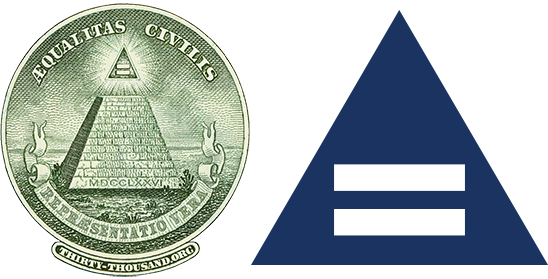The Wyoming Rule is conceptually flawed
In addition to being ineffective relative to mitigating inequitable electoral disparities, the Wyoming Rule is poorly reasoned in its conception
The Wyoming Rule asserts that our total number of Representatives should be determined by dividing the nation’s total apportionment population by the total population of our least populous state. Applying this simple formula to the 2020 apportionment population results in a total of 573 Representatives.1This is calculated by dividing the total apportionment population by Wyoming’s population as follows: 331,108,434 ÷ 577,719 = 573.13 → rounds to 573 Representatives.
In addition, inherent in the Wyoming Rule is a peculiarity that makes it unsuitable as a guiding principle. It is, in effect, the smallest-state rule, wherein the population size of the smallest state is divided into the total population to determine the total number of Representatives. As illustrated in the chart below, determining the number of Representatives based on this principle would result in absurdly fluctuating House sizes over time.
From 1900 to 1960, this algorithm could have been called the Nevada Rule, if named for the least populous state. In 1970, that distinction passed to Wyoming thanks to the success of Nevada’s luxury casino resorts during the ’60s. And even during Wyoming’s smallest-state reign, the total number of Representatives would have fluctuated over time. Clearly, basing the size of the House on the smallest state’s population would be neither a sound nor enduring principle.
Unfortunately, determining the equitable size of the House does not lend itself to such facile solutions. And nor will adding just a few hundred Representatives correct centuries of representational degradation of the citizenry.
© Thirty-Thousand.org [published 09/18/2022]
- 1This is calculated by dividing the total apportionment population by Wyoming’s population as follows: 331,108,434 ÷ 577,719 = 573.13 → rounds to 573 Representatives.





